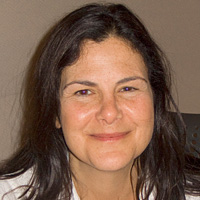I have been seeing double lately. Twins are popping up everywhere, not surprising given increased use of fertility treatments. I particularly like to see identical twins, mirror images of each other, the rare result of one fertilized egg that splits. I know the special bond they share because I used to be a twin.
My identical twin Maddy died almost five years ago. We were twins for 48 years, almost 49 if you count those silent months in the womb. It is hard to adjust to being a singleton. Even though we lived different lives, the primordial attachment never lessened. Especially for identical twins, who share the exact DNA, there is a sense of losing a part of yourself, like the pain of a phantom limb.
No loss is easy. My older sister died a few years before my twin and I miss her terribly. But growing up an identical twin is different. You enter the world with a partner who looks, speaks, and often thinks like you. Isn't that what we want, after all? To find our soul mate, someone who knows us as well as we know ourselves.
I found a community of twinless twins on Facebook, and take comfort in their collective understanding. They know that birthdays are rough, and that sometimes catching a glimpse of yourself in the mirror is startling, seeing your twin's face looking back at you.
Though friends are always ready with a hug, the twinless twins really get it, these strangers with whom I have nothing else in common. How odd that something as ephemeral as the internet can offer solace for such a tangible loss. It helps to belong to a group that understands my particular pain. On a bad day, I can reach out and find half of a matched pair, uncoupled but, at least briefly, not alone.
